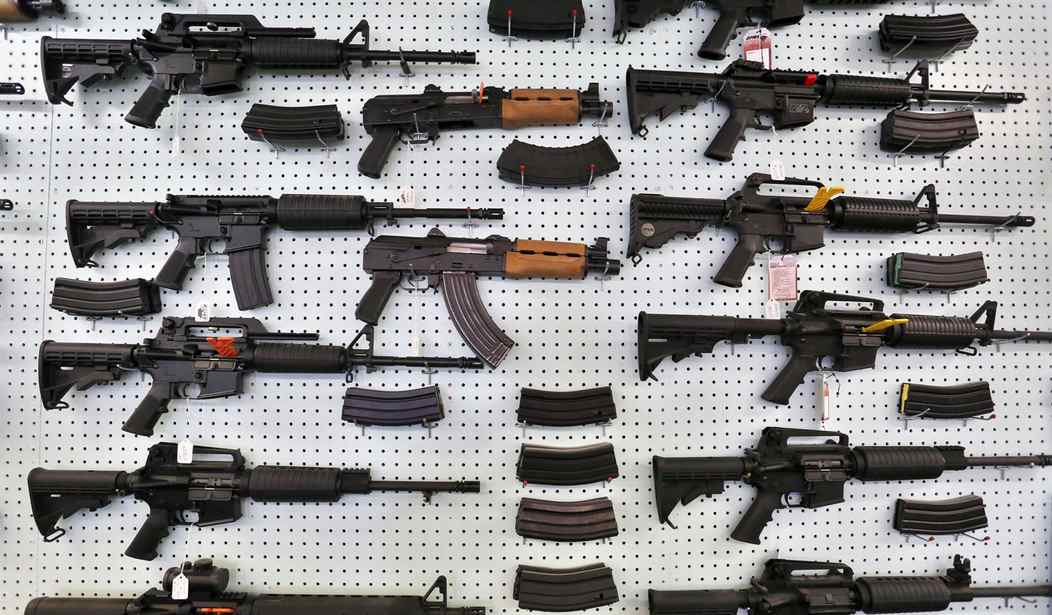Since many Americans buying guns today are first-time owners, here are arguments against some of the anti-gun myths they may not have previously encountered.
Myth #1—The Second Amendment gives us the right to arms.
During President Trump’s speech at Mount Rushmore on July 3, he said “We will never abolish our police or our great Second Amendment, which gives us the right to keep and bear arms.” Thankfully, the president supports law enforcement officers and the right to arms, but his speechwriter got it wrong on the Second Amendment. So has the Supreme Court. In District of Columbia v. Heller (2008), which correctly struck down D.C.’s ban on handguns because the Second Amendment protects “the individual right to possess and carry weapons in case of confrontation,” it incorrectly said the amendment “conferred an individual right to keep and bear arms.”
In fact, the Second Amendment doesn’t give or confer the right to arms, it recognizes that the right exists and says it “shall not be infringed.” Just as the First Amendment protects “the freedom of speech” and “the right of the people peaceably to assemble,” and the Fourth Amendment protects “the right of the people to be secure . . . against unreasonable searches and seizures,” the Second Amendment protects “the right of the people to keep and bear Arms.” (Emphases added.)
As the Supremes correctly said elsewhere in Heller, “the Second Amendment implicitly recognizes the pre-existence of the right and declares only that it ‘shall not be infringed.’ As we said in U.S. v. Cruikshank (1876), “[t]his is not a right granted by the Constitution. Neither is it in any manner dependent upon that instrument for its existence.”
Recommended
Myth #2—Heller invented an individual right to arms out of thin air. That’s what anti-gunners want people to believe, but as Heller said, Cruikshank recognized that the Second Amendment protects an individual right. So did other Supreme Court opinions, particularly Presser v. Illinois (1886), U.S. v. Miller (1939), and U.S. v. Verdugo-Urquidez (1990). The “thin air” inventions were by anti-gunners, particularly the Kansas Supreme Court’s idea, in Salina v. Blaksley (1905), that the Second Amendment protects the “right” of a person to bear arms only while serving in a state militia, and the Third Circuit Court of Appeals’ idea, in U.S. v. Tot (1942), that the amendment protects the “right” of a state to have a militia.
Myth #3—Repealing the Second Amendment would eliminate the right to arms. Since the right existed before the Second Amendment, it would still exist if the amendment were repealed. It might even be protected by the Ninth Amendment, which says “The enumeration in the Constitution of certain rights shall not be construed to deny or disparage other rights retained by the people.”
Myth #4—All rights are subject to limitation. In another error, Heller said that, historically, “the right was not unlimited, just as the First Amendment’s right of free speech was not.” Where speech is concerned, anti-gunners are fond of pointing out “you can’t yell ‘fire’ in a crowded theater.” But the prohibition on yelling “fire” doesn’t limit the freedom of speech, because the freedom of speech never included yelling “fire,” just as it didn’t include slander, threatening to kill someone, or inciting people to riot.
Similarly, laws that prohibit brandishing a gun to intimidate innocent people, giving a gun to a sociopath to be used in a riot or insurrection, or possessing a stolen gun are not limitations on the right to arms, because those crimes have never been part of that right. The right to arms is what it was when the Second Amendment was adopted: the right to possess and carry arms for all lawful purposes, including, but not limited to, defense against criminals, tyranny, insurrection, and invasion.
The best court decision along these lines is Bliss v. Commonwealth (1822), in which the Kentucky Supreme Court struck down a law prohibiting people from carrying weapons concealed, on the grounds that carrying concealed was within the scope of the right when the Kentucky constitution was adopted. The court said “whatever restrains the full and complete exercise of that right . . . is forbidden by the explicit language of the constitution.”
Myth #5 —The Second Amendment protects the right to only muskets. Here’s one where Heller got it right. It explained, “Some have made the argument, bordering on the frivolous, that only those arms in existence in the 18th century are protected by the Second Amendment. We do not interpret constitutional rights that way. Just as the First Amendment protects modern forms of communications, and the Fourth Amendment applies to modern forms of search, the Second Amendment extends, prima facie, to all instruments that constitute bearable arms, even those that were not in existence at the time of the founding.”
It noted too, “The 18th-century meaning (of arms) is no different from the meaning today. . . . ‘weapons of offence, or armour of defence.’” The all-encompassing definition of “arms” is important because it includes offensive weapons not yet invented and defensive equipment, such as body armor. Indeed, while firearms didn’t become effective for war fighting purposes until the Battle of Cerignola in 1503, armor was common during the first 2,000 years of warfare’s history and has resumed its place among “arms” with the advent of protective vests, chest plates, helmets, and hand-held shields during the last few decades.
The historical point is important, because the Supremes and particularly Justice Brett Kavanaugh have declared that history is one of three factors that should determine whether a gun ban is constitutional. In Heller v. District of Columbia (2011), the Court of Appeals for the District of Columbia Circuit upheld D.C.’s ban on “assault weapons.” Then-Judge Kavanaugh dissented, saying “Heller and McDonald leave little doubt that courts are to assess gun bans and regulations based on text, history, and tradition, not by a balancing test such as strict or intermediate scrutiny.” McDonald v. Chicago (2010), to which Kavanaugh referred, said “Heller makes it clear that this right is deeply rooted in this Nation’s history and tradition.”
The gun control debate will likely be on the front burner as Election Day approaches, so let’s not let the wool be pulled over our eyes.
























Join the conversation as a VIP Member